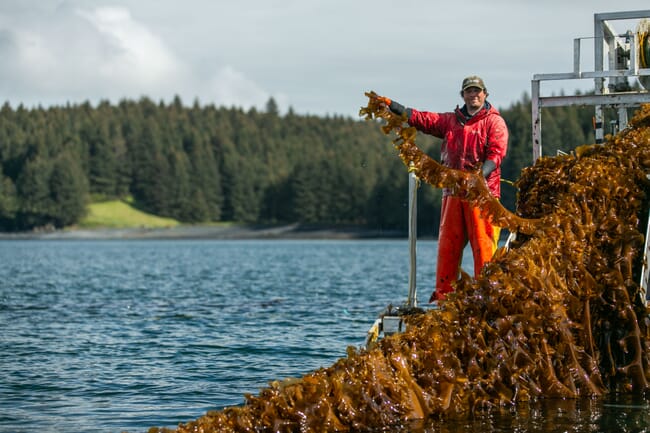
The University of Fairbanks will investigate whether seaweed farms could be developed with the harvest of rare earth elements in mind © Blue Evolution
REEs are critical to produce high performance electric motors and generators, and PGMs are central to decarbonisation technologies, such as water electrolysers for hydrogen production, fuel cells for energy production, and catalysts for industrial-chemical processes. The three projects, announced today, support the Biden-Harris administration’s commitment to securing a domestic supply chain for critical minerals and achieving the country's net-zero goals.
“We know we need different sets of critical mineral supply chains to reach President Biden’s ambitious clean energy and decarbonization targets,” said Evelyn N Wang, director of the Advanced Research Projects Agency-Energy (ARPA-E).
“The teams announced today are up for the challenge of exploring the environmental, temporal, and ecological factors that influence the content of REEs and PGMs in macroalgae, and then developing methods to extract these critical minerals. I’m glad these teams are joining ARPA-E’s strong ocean portfolio, and I look forward to seeing the technologies they develop.”
The teams are set to receive funding through the ARPA-E Critical Mineral Extraction from Ocean Macroalgal Biomass Exploratory Topic and are:
- Pacific Northwest National Laboratory (PNNL) will study methods to efficiently extract REEs and PGMs from hyper-accumulating species of marine macroalgae. Extraction methods will also re-utilize chemical extractants and retain the value of the algae for other purposes such as biofuels and other industrial feedstocks, resulting in minimal tailings. New instrumentation capability at PNNL will allow for greater analysis of the biological variability of minerals and metals, and the team will develop – among other advancements – substances to extract metals using specialised molecules that bind to rare earths in solution. (Award amount: $1,350,000)
- Umaro Foods (Berkeley) will leverage advancements in chelator technology to efficiently extract REEs and PGMs from seaweeds. They will be applying advanced metal chelator molecules to selectively extract metals in a non-destructive manner from process streams producing valuable food-grade seaweed proteins and commodities such as agar, alginate and carrageenan. Combined with these co-commodities, the development of a sustainable and efficient extraction process from seaweed could bring about an independent, sustainable and strategically resilient supply of REEs located within the United States. (Award amount: $1,782,000)
- University of Alaska Fairbanks will investigate the accumulation potential of REEs in hyper-accumulating native seaweed species growing around the coast of the Bokan Mountain rare earth element deposit in Southeast Alaska. The project will conduct a comprehensive environmental survey to understand how natural erosion transports rare earth elements from ridge to ocean. The team will then collect native seaweed species and conduct biomass tissue chemical composition and polymer analysis to create maps of coastal sites rich in REEs bound to biological materials, along with cultivation guidelines to harvest optimal mineral concentrations. This has the potential to guide the selection of seaweed species and farm designs for large-scale cultivation and inform the maximum scalability of seaweed farming operations designed to harvest REEs without the use of traditional mining operations. (Award amount: $1,878,116)
More information and complete project descriptions for the teams announced today can be found on the ARPA-E website.




